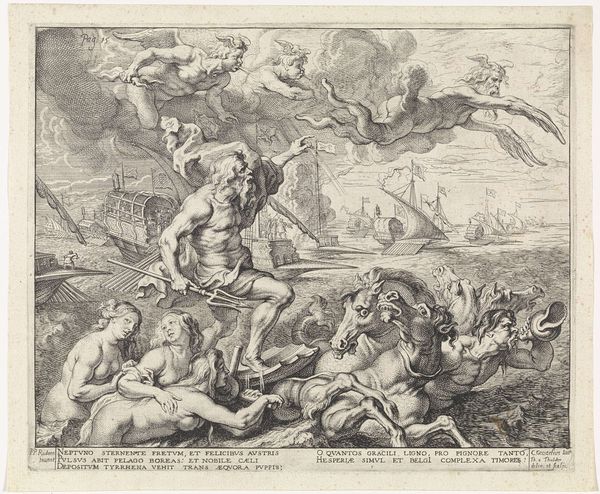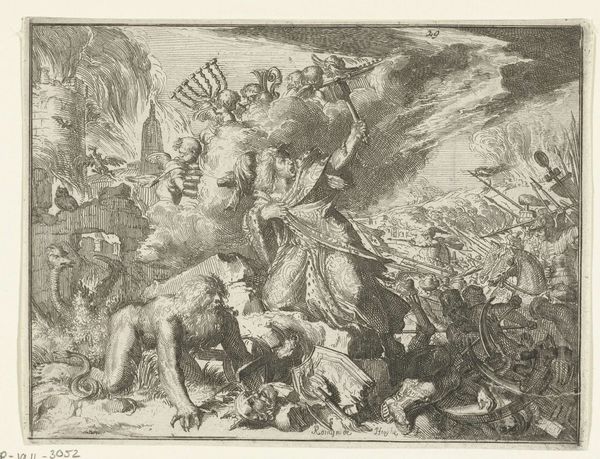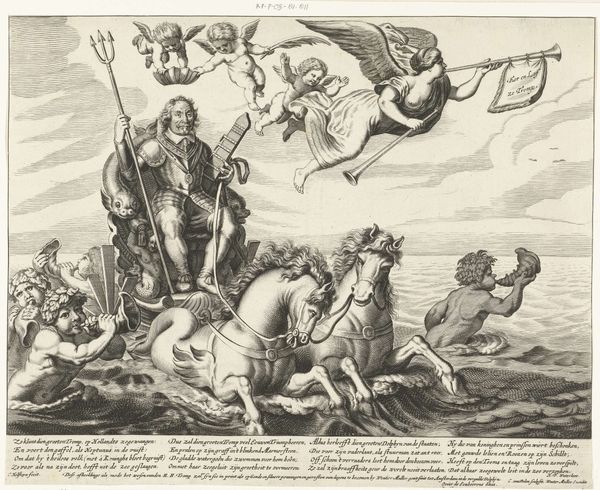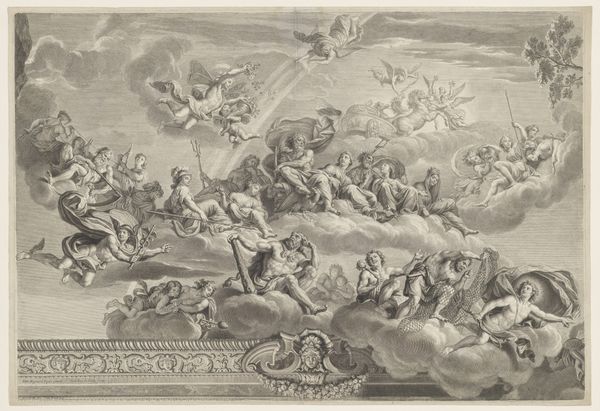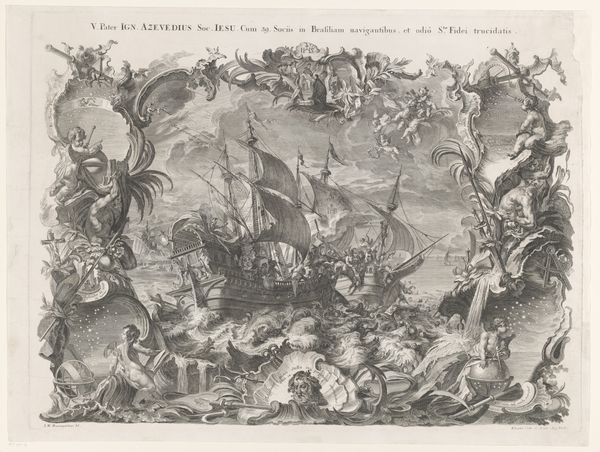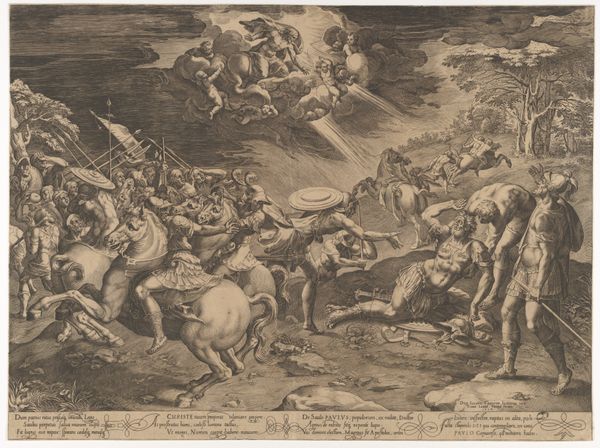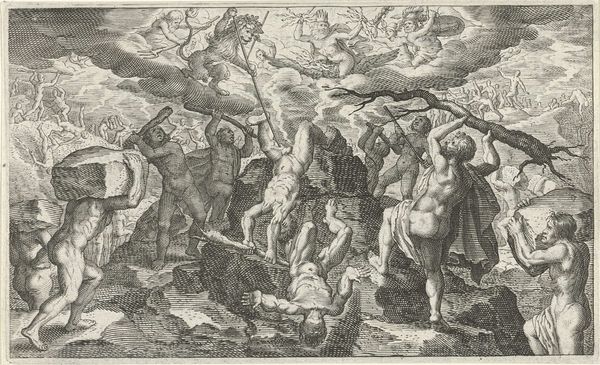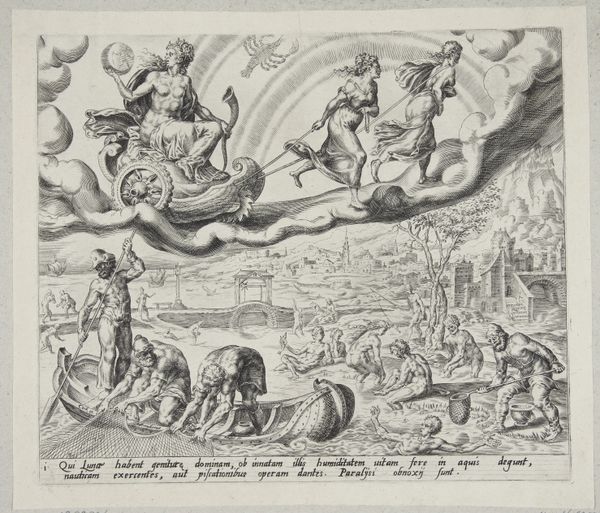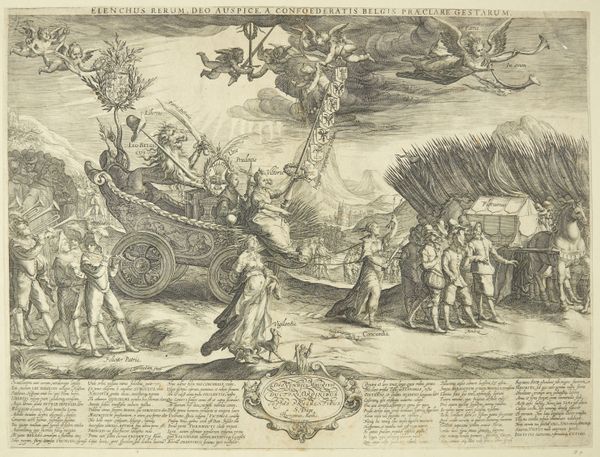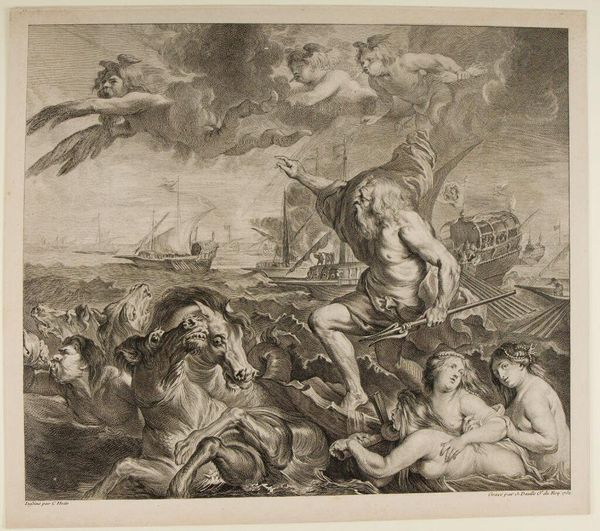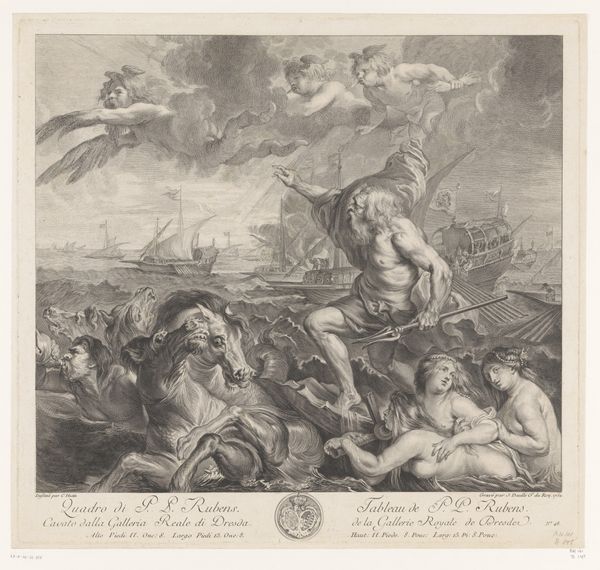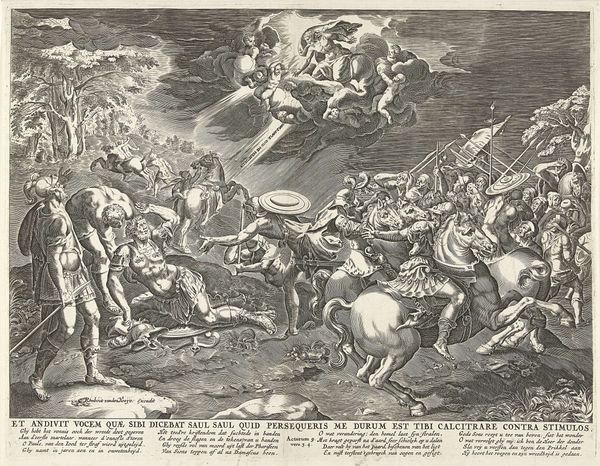
Dimensions: height 294 mm, width 433 mm
Copyright: Rijks Museum: Open Domain
This engraving, made by Philips Galle around 1570, depicts a scene from Ovid's *Metamorphoses*: Apollo and Diana slaying the children of Niobe. The cultural context of this image lies in the rediscovery of classical literature and mythology during the Renaissance. Artists like Galle turned to these ancient stories for both subject matter and moral lessons. Here, Niobe's hubris, her boastfulness about having more children than Leto, the mother of Apollo and Diana, leads to her tragic punishment. Consider how the print media, which was increasingly prominent at this time, played a role in disseminating classical stories and values. Galle’s print, like many others, served as a vehicle for moral instruction and the display of artistic skill. To fully understand this work, we can consult books of mythology, the history of the print market, and study the influence of classical art and literature on Renaissance society. The real meaning of this work lies in its web of connections to the cultural and institutional context of its time.
Comments
No comments
Be the first to comment and join the conversation on the ultimate creative platform.
